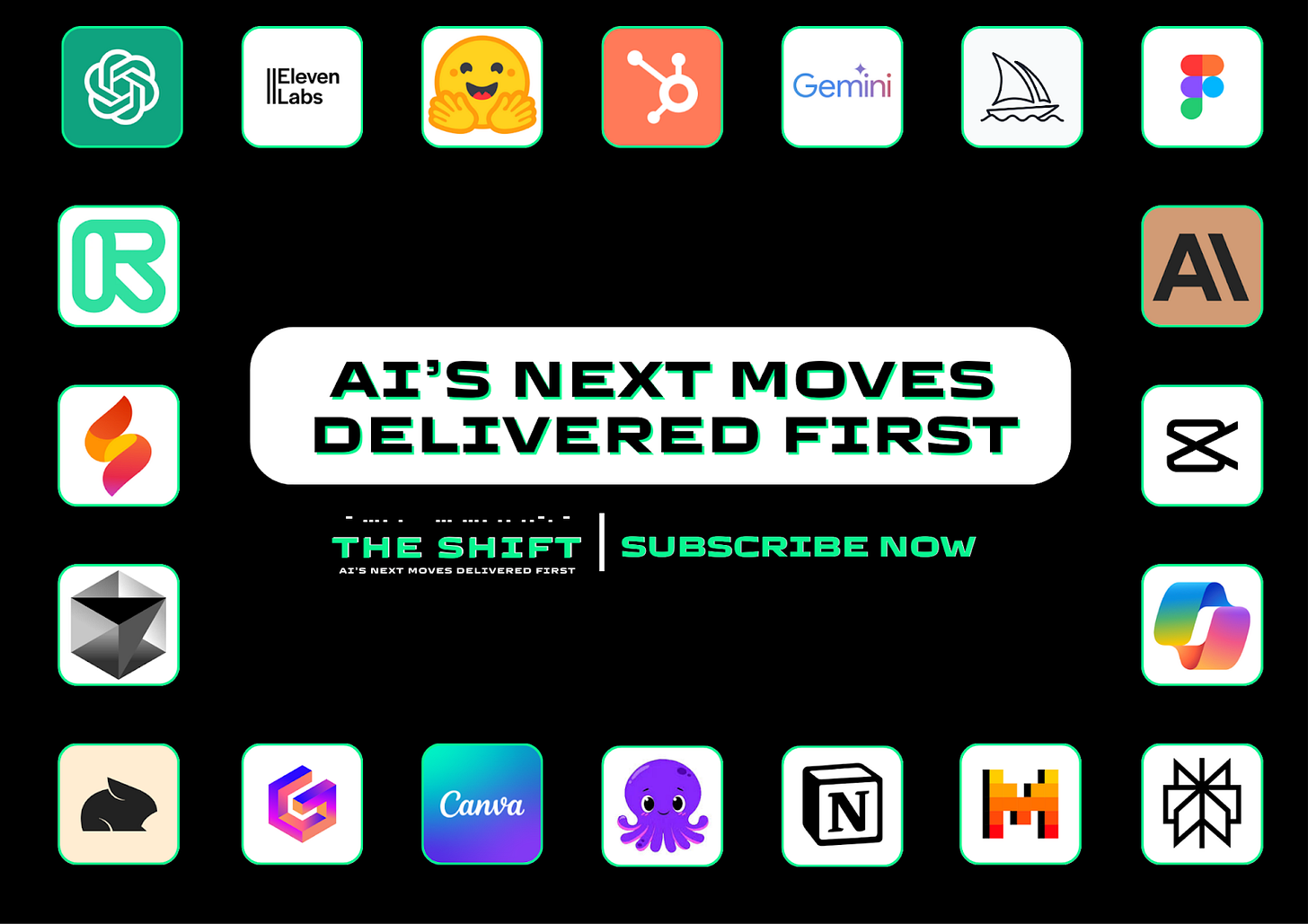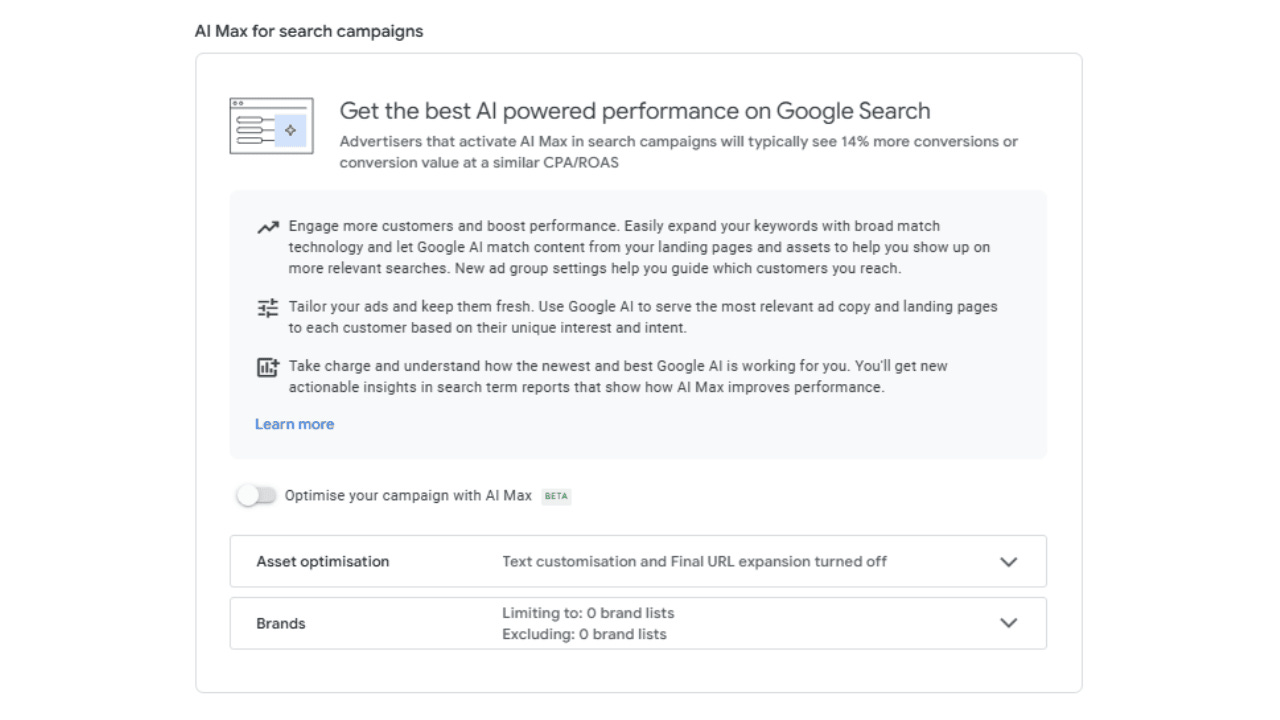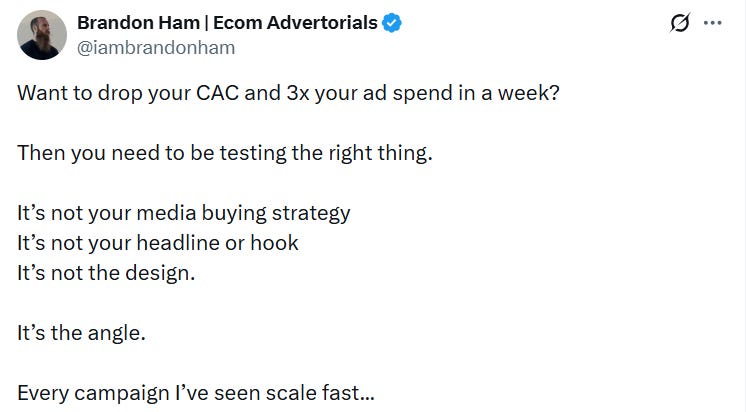The Pre Commerce Playbook
🕵️♀️ How Elite DTC Brands Build Invisible Pipelines Before Launch, PMax Reporting Unlocks Transparency, and a New AI Rebrand, and more!
Howdy Readers 🥰
In this newsletter, you’ll find:
🕵️♀️ The Pre-Commerce Playbook: How Elite DTC Brands Build Invisible Pipelines Before Launch
📊 PMax Reporting Unlocks Transparency, and a New AI Rebrand
🚀Tweet of the Day
If you’re new to Buyology then a hearty welcome to you, You’ve reached the right place alongside 50k+ amazing people, Before you forget, if someone forwarded this newsletter to you, don't forget to subscribe to our newsletter so you never miss out!
Together with The Shift
It’s Not Humans vs AI. It’s You vs People Who Use AI Better Than You.
You’re not competing against the machine.
You’re competing against the person who integrated the machine into their workflow last week.
The Shift AI is your five-minute daily advantage that helps you:
✅ Automate complex tasks like a strategist, not a coder
✅ Discover AI tools before they go mainstream
✅ Stack systems that give you exponential results
Every edition is practical, no-filler, and built to keep you ahead.
📩 Plus, your welcome bonus includes 2000+ curated tools, 300+ prompts, and free AI mastery courses.
The gap isn’t between AI users and non-users. It’s between those who get results and those who don’t.
🕵️♀️ The Pre-Commerce Playbook: How Elite DTC Brands Build Invisible Pipelines Before Launch
Before the first ad runs. Before the product drops. Before the pixel ever fires. The best DTC founders don’t start with marketing.
They start with pipeline infrastructure, quietly building a waitlist of strategic humans before the website even goes live. This is the hidden system behind every great launch: pre-commerce > e-commerce.
What Actually Happens Behind a “Successful” Launch
Most public DTC launches look like a beautiful web of influencer UGC, smart paid ads, and a sexy landing page. But what you don’t see are the 90 days before launch spent doing things that feel nothing like marketing:
DMing 20 stylists, editors, retail buyers, boutique owners
Creating short, custom prospecting lists based on vibe and influence, not just reach
Booking 1:1 walkthroughs with press people and potential collab partners
Soft-pitching HR folks and brand leads for B2B gifting or event sampling
Manually seeding the product to people with distribution power
This is a non-scalable effort that makes everything else scalable later.
What It Takes to Do This Well
You can’t do this with a pixel and an ESP. You need:
A real prospecting list, not pulled from a CRM, but built by hand or scraped with intent
Smart filters to find titles like “Head of Visual Merchandising” or “Experience Lead”
A way to track who you’ve messaged, what you sent, and what moved the needle
The mindset of a sales team, not just a brand marketer
This is why most DTC teams don’t do this. It’s not flashy. But it builds leverage.
This is where Apollo enters, not loudly, but like a surgical tool:
Search filters let you build lists by title, company type, or even funding round (great for gifting to startups)
CRM enrichment lets you layer missing emails or phone numbers to your hand-built list
The platform lets your small team DM 100 high-value contacts, not spam 10,000
Bonus: Job change alerts help you catch prospects just as they join a new brand or retailer
You’re not using Apollo like a SaaS team. You’re using it like a DTC sniper.
The Launch Timeline Nobody Talks About
Week 0–2: Build your initial prospecting segments, press, collab partners, and micro retail
Week 3–5: Seed product, schedule calls, start 1:1 outreach
Week 6–8: Activate early momentum, referrals, intros, shoutouts
Week 9–12: Only now do you launch ads, PR, and your “public” funnel
This isn't a theory. It’s what brands like Clementine, JIGGY, and Haus did behind the scenes.
This works because you stop treating your launch like an ad campaign and start treating it like a relationship funnel. The ROI on 30 DMs is often greater than 30,000 impressions. But you only see that if you plan for it. Want to try this? Use Apollo to build your first targeted pre-commerce list free forever.
📊 PMax Reporting Unlocks Transparency, and a New AI Rebrand
Google’s long-promised transparency update is finally landing: Performance Max campaigns are starting to show channel-level reporting. Alongside it, Google has begun rebranding Search Max to AI Max, reflecting a bigger shift toward AI-first advertising.
The Breakdown:
PMax campaigns now show performance by channel - Advertisers can now view how their campaigns perform across individual Google properties like Search, YouTube, and Display, letting teams identify weak channels, cut wasted spend, and double down where creative performs best.
You can finally optimize assets with intent - Knowing where your creative appears allows you to refine visuals, copy, and CTAs by channel. If a YouTube creative underperforms while Display excels, you can adapt instead of guessing.
Search Max is now AI Max, with a toggle. - Inside the Google Ads interface, Search Max is being renamed to AI Max, complete with a new toggle that reads “Optimize your campaign with AI Max,” aligning with Google’s larger AI branding push from Google Marketing Live 2025
This update finally gives performance marketers a chance to see inside PMax, one of the most powerful yet opaque campaign types in Google Ads. As AI-driven automation replaces granular controls, insights like these are critical for effective optimization.
🗝️ Tweet of the Day
Advertise with Us
Wanna put out your message in front of over 50,000 best marketers and decision makers?
Checkout our Partner Kit here🤝
At Buyology, we care about our readers and want to provide the best possible experience. That's why we always look for ways to improve our content and connect with our audience. It would be amazing if you could hit us up with feedback about our content or absolutely anything, we are always up for a chat 🥰
Thanks for your support, We'll be back with more such content 🥳



